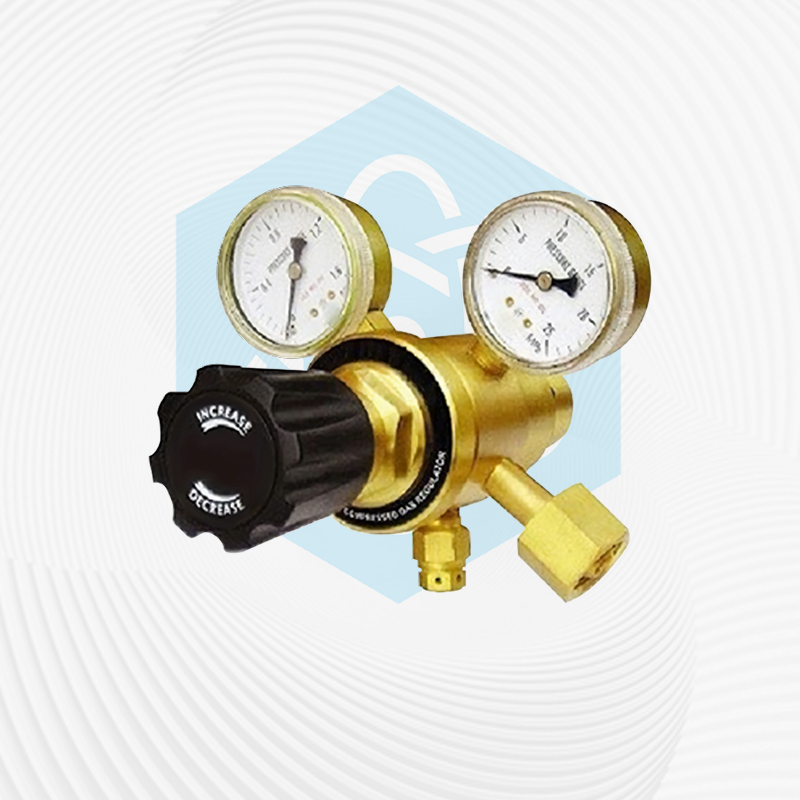A pressure reducing valve is a valve that adjusts the inlet pressure to a desired outlet pressure, and relies on the energy of the medium itself to automatically maintain a stable outlet pressure. From the perspective of fluid mechanics, a pressure reducing valve is a throttling element that can change local resistance by changing the throttling area.
Product Name: Oxygen Pressure Reducing Device Oxygen Meter Instrument Oxygen Meter
Material: Pure copper valve body, high quality, good quality, safe and stable
Specification: Main meter 25MP, secondary meter 6MP
Usage: Universal for all models of calorimeters, connecting oxygen cylinders and oxygenators!
The oxygen pressure reducing valve has stable output pressure, good sealing performance, and the valve body is equipped with a filtering device, making it easy to use. The lightweight structure of the valve body adopts the control of the opening and closing parts inside the valve body to regulate the flow rate of the medium, reduce the pressure of the medium, and at the same time, adjust the opening of the opening and closing parts with the help of the pressure behind the valve, so as to maintain the pressure behind the valve within a certain range. The characteristic is to maintain the outlet pressure value within a certain range under the constant change of inlet pressure, which is stable and reliable, safe and reassuring.
Attention:
There are two gauges on the oxygen pressure reducing valve of the calorimeter, and the left oxygen gauge shows 0-6 pressure. This is adjusted by the rotary valve to output oxygen pressure, which is also adjusted to the oxygen pressure suitable for one's own use. The pressure used in coal analysis is 2.8-3.2 pressure; The header on the right displays 0-25 pressure, which shows the remaining oxygen pressure in the oxygen cylinder. The requirement for filling the calorimeter oxygen bomb with oxygen is: if the pressure is less than 4, the oxygen cylinder needs to be replaced. A full or newly filled oxygen cylinder usually displays 10 pressures;
Note: When using an oxygen meter safely, attention should be paid to adjusting the oxygen pressure, and always remember not to reach the red area!
Fault analysis and handling methods for oxygen pressure reducers:
1. Leakage of the meter head: manifested as the high-pressure meter head not pressurizing when the oxygen cylinder is opened or the low-pressure meter head not pressurizing when the pressure reducer is adjusted, and a hissing sound of leakage can be heard. If the above situation occurs, please return it to the manufacturer or dealer for repair, or you can buy the meter head for replacement yourself (make sure the oxygen meter head or this meter head is oil-free). Be sure to tighten it when replacing. If a 6MPA oxygen meter head is not available, a 4MPA oxygen meter head can also be used instead
When reopening the oxygen cylinder, the pressure displayed on the low-pressure gauge is not the pressure displayed when the cylinder was last closed. If the above situation occurs, please turn the adjustment screw back to the original state, return the low-pressure gauge head to the zero position, and then readjust to the pressure you need to use. According to relevant national regulations, the pressure reducer should be adjusted to its original state after each use.
3. Self flow: When the oxygen cylinder is opened, there is gas leakage from the outlet joint or the low-pressure oxygen meter continues to rise. At this time, the pressure reducer should be replaced and returned to the manufacturer for repair. The probability of this situation occurring is relatively low.
The intake large nut is not tightened, indicating that when the oxygen cylinder is closed, the high-pressure gauge head slowly falls back to the zero position. At this time, use a wrench to tighten the large nut. If the high-pressure gauge head falls back to a pressure value similar to that of the low-pressure gauge head, it should be a leak in the oxygen cylinder valve and the oxygen cylinder needs to be replaced. If the oxygen cylinder ratio is not good, it is also possible to damage the ratio of the intake nut. At this time, you can buy a suitable nut locally to replace it.Be careful not to drop out the accessories in the pressure reducer during replacement.
4. Membrane damage: manifested as a hissing air leakage sound at the small hole on the back cover of the pressure reducer. At this time, the membrane should be returned to the manufacturer for replacement and not repaired on its own.
5. Leakage at the safety valve: At this time, use a wrench to loosen the safety valve nut, then use a screwdriver to tighten the safety valve screw until there is no leakage, and then use a wrench to tighten the safety valve nut in place
In addition, there may be air leakage from the outlet joint, which can be tightened with a wrench.




